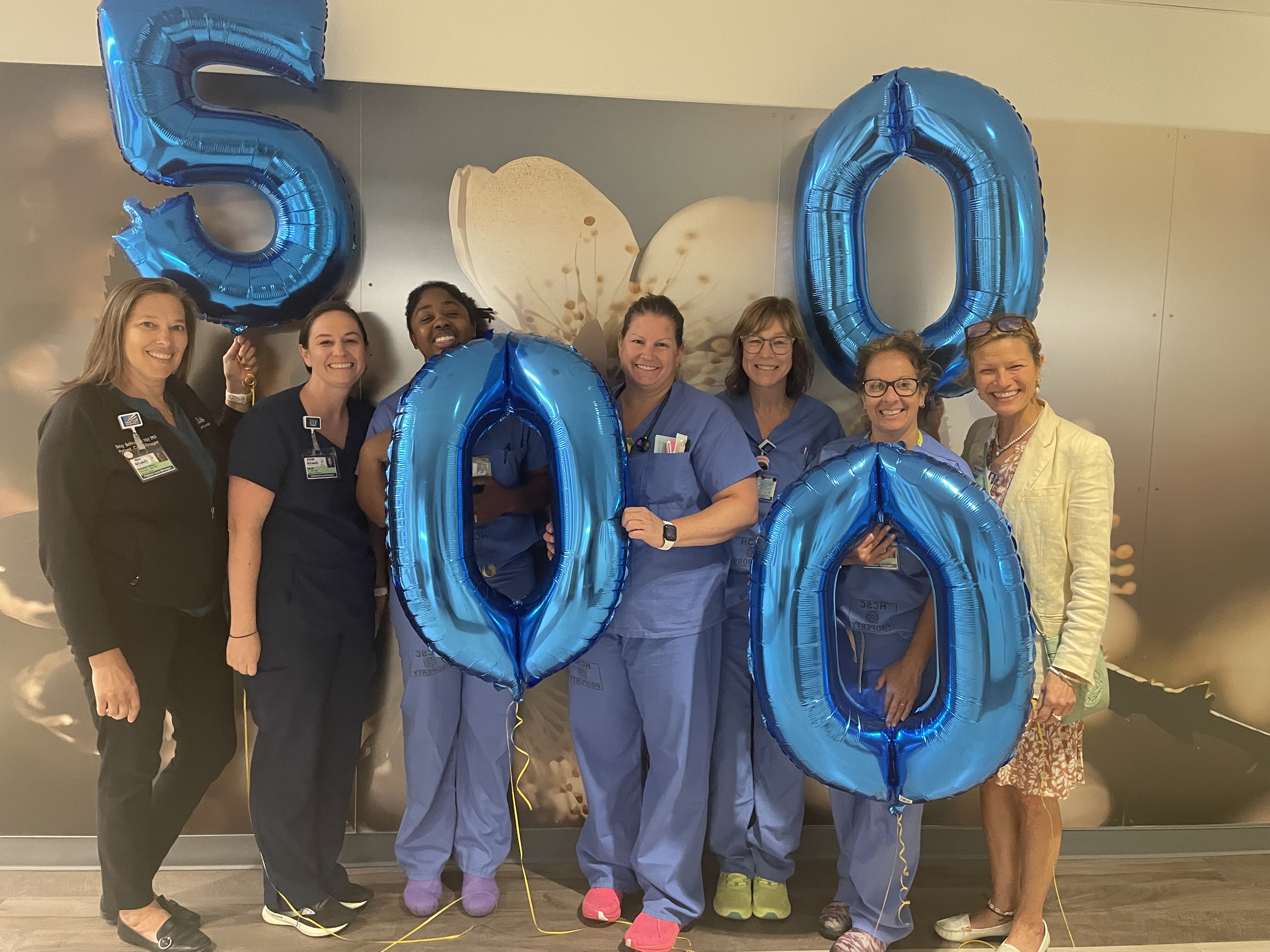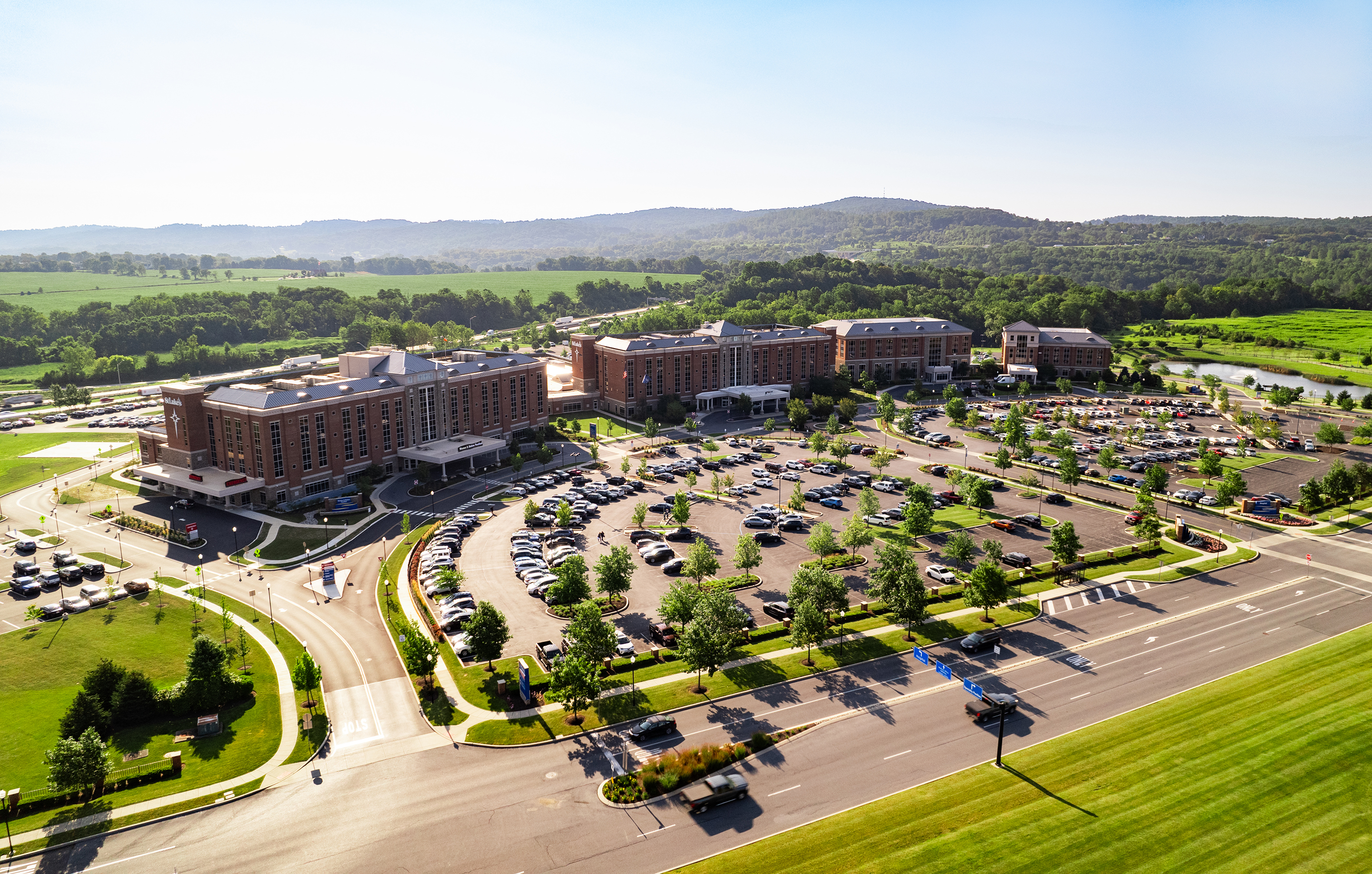Bucking the Declining-Birth Rate Trend
June 28, 2024

From left: Betsy Schmeltzle, Sarah Price, Dr. Amber Covington, Kerrie Hockin, Lynda Crighton, Andrea Schadler and Kristina Troxell.
While many health systems across Pennsylvania have been experiencing a decrease in newborn deliveries over the past five years, St. Luke’s University Health Network (SLUHN) is trending in the opposite direction as more mothers choose St. Luke’s for their prenatal care and deliveries than ever before.
For the first time in the Network’s history, a total of more than 5,000 babies were born at St. Luke’s three birthing hospitals during a fiscal year, which ends June 30. The figure surpassed Fiscal Year 2023’s total of 4,700 births, which itself was a new high.
“This major milestone reflects our patients’ trust in, and desire for, the special care and expertise they experience in our labor and delivery suites at St. Luke’s Allentown, Anderson and Upper Bucks campuses,” said Elizabeth Dierking, MD, chair of the Department of OBGYN.
Tiny Colette Harrar became number 5,000, arriving on June 26, at 10:49 p.m., at St. Luke’s Allentown Campus in its new Labor and Delivery Unit. The 20-inch long, 7-pound, 11.5-ounce infant is the daughter of Kutztown residents Glenn and Ellen Harrar, and the little sister of their daughter Harper.
“We really like St. Luke’s,” said Ellen. “This is a beautiful facility, and the care is phenomenal and very professional.” Two other babies were born at this hospital on the same day.
Harper was born at another hospital, but the Harrars chose to switch to St. Luke’s after hearing great stories from friends about the care there.
“We were looking for something new, and this was a wonderful experience,” said Ellen, who vowed to return to St. Luke’s if she would become pregnant with a third child.
Hospitals in Northeast Pennsylvania are seeing a decline or flattening of their birth rates, consistent with the rest of Pennsylvania and the nation, according to https://www.health.pa.gov/topics/HealthStatistics/VitalStatistics/BirthStatistics/Pages/birth-statistics.aspx.
US birth rates are predicted to decline throughout the remainder of the 21st century, from 10.8 births per 1,000 people in 2023 to 8.5 per 1,000 in 2100, according to usafacts.org.
“This trend is happening throughout Pennsylvania and in most of the country, but not at St. Luke’s,” added Dr. Dierking.
More babies have been born at St. Luke’s than at any other health system in the Lehigh Valley. The Network’s reputation for quality fetal, maternal and pediatric care has spread by word of mouth. It was voted as the Morning Call Readers’ Choice for the Best Place to Have a Baby.
In response to popular demand, the Network earlier this year opened a new and expanded Labor and Delivery unit in its Women & Babies Pavilion at its St. Luke’s Allentown Campus, doubling the size of its original unit. The first babies were born in this new facility on Valentine’s Day; to date 577 births have taken place there.
This new addition increases the community’s access to high-quality birthing, post-partum and newborn services, including neonatal intensive care.
St. Luke’s puts its money where its moms are, leading the region in opening new hospital-based labor and delivery units, and expanding other sites and services focused on women’s health. In addition to the Allentown Women & Babies Pavilion, St. Luke’s Upper Bucks Campus began delivering babies in 2022, following the St. Luke’s Anderson Campus, which launched its birthing program during the COVID pandemic in 2020.
“To grow our capacity, and keep our commitment to our community, for meeting the needs of women of all ages, St. Luke’s has invested $250 million in women’s health facilities, programs and expert staffing,” said Nicole Nye, Network Vice President of Operations. In addition to the three new Women & Babies Pavilions at their hospitals, the Network opened five new outpatient women’s health practices in the region: two in Easton, two in Upper Bucks and the Valley’s only OBGYN office where Spanish is spoken exclusively, in Allentown.
Fifteen new obstetric/gynecologists have joined the network since 2020, and plans to bring on five more within the next two years as the need for these specialists grows. Its four-year obstetrics/gynecology residency trains 24 new doctors per year at its Allentown and Anderson campuses.
Expectant mothers and couples are attracted to St. Luke’s for prenatal and postnatal care, and the delivery of their babies, by the small and intimate practices and care teams that provide patients the personalized care they seek, including having the same doctor (team) follow them throughout pregnancy and delivery. Most other hospitals don’t offer/guarantee this convenience to their pregnant patients.
“Our patients tell us they seek a St. Luke’s provider/practice for the convenience and quality of their pregnancy and birthing experience, which isn’t a common practice in most other networks,” said Dr. Dierking. St. Luke’s “Baby and Me” program, offered at all three campuses, ensures highly personalized prenatal and postpartum care, in addition to lactation education and support, behavioral health care and expertise for high-risk pregnancies. All labor and delivery units feature 24/7/365 neonatology services ensuring the highest level of advanced care available for complex pregnancies and births and critically ill babies.
In May, St. Luke’s Labor and Delivery Unit and Obstetric Anesthesia Service at St. Luke’s Anderson Campus was designated as Pennsylvania’s third (and the Valley’s first) Center of Excellence (COE) by the Society of Obstetric Anesthesia and Perinatology, putting them in elite company with national organizations that provide the highest level of safe and effective anesthesia care for women and their babies.
Read More NewsLatest News


April 10, 2025
National Recognition for SLUHN Graduate Medical Education

April 09, 2025
In Safe Hands Award

April 08, 2025